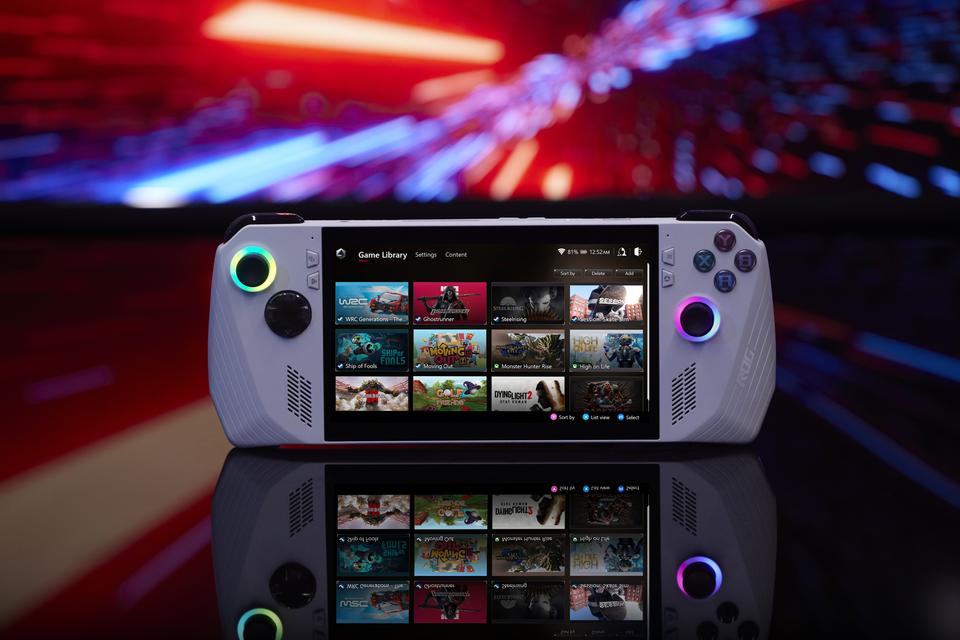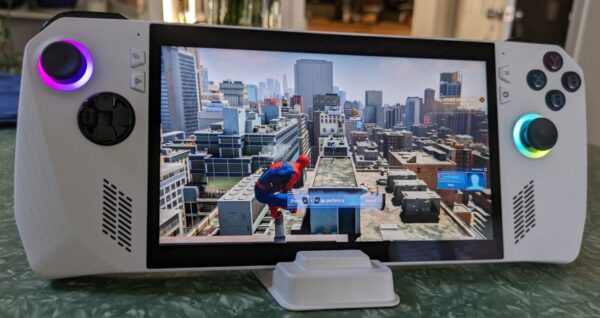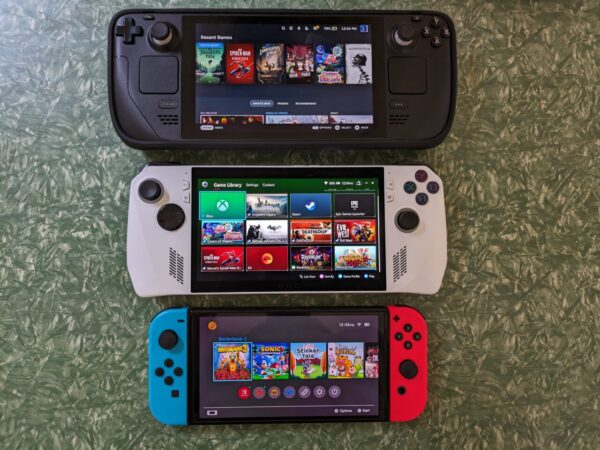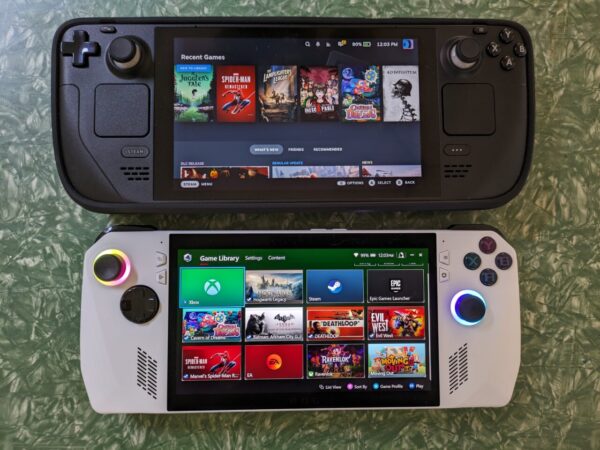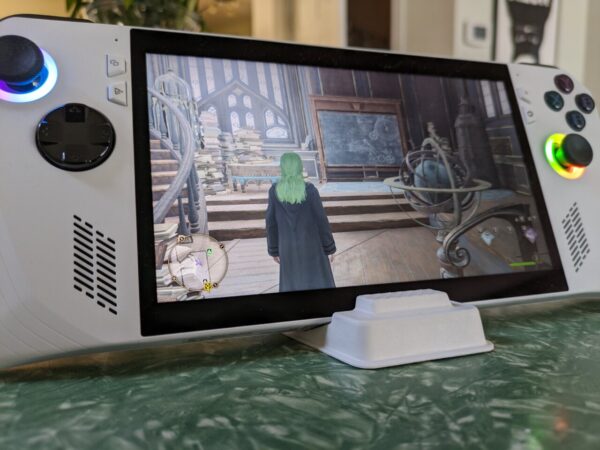I feel like there are two ways to look at ASUS’ ROG Ally Z1, the lower-spec version of the ROG Ally that came out back in the summer.
The first can be found here. (And here. And here. And plenty of other places.) From this perspective, you can either buy this version of the ROG Ally, which runs on the Ryzen Z1, or pay $100 or so more and get the version that runs on the Ryzen Z1 Extreme chip, which performs much better. Therefore, you should spend the extra $100.
While I understand that thinking, it’s worth noting that there’s another way to look at it: while the ROG Ally Z1 doesn’t quite match up with the Z1 Extreme, the performance isn’t that far off. Sure you’re sacrificing some power, but you can play all but the absolute most challenging games (sort of – I’ll get back to this) and you can get it for $100 less.

(Image taken from ASUS support site since our writer couldn’t figure out how to take a screenshot)
In case you couldn’t tell, I’m much more sympathetic to this latter view. Admittedly, this may be because I’ve never played the Z1 Extreme version, so my only points of comparison are the Steam Deck, a middling laptop, and a whole bunch of other handhelds. And while I love the Steam Deck (and the Switch, and those other handhelds), the ROG Ally may just be my favourite handheld yet, for a whole bunch of reasons.
First and foremost, it feels fantastic to hold. Again, I’m a huge fan of the Steam Deck, but there’s no denying that it’s a little bulky. While the ROG Ally also features a 7-inch screen, it’s slightly smaller and it weighs a little less. Even if we’re only talking fractions of an inch and a couple of dozen grams, you really notice the difference when you’re holding it, and the difference only feels more pronounced the longer you play. It also helps that it feels a little easier to use the touchscreen on the Ally – the way the grips curve makes reaching over with your thumb feel a little more natural.
I’m also much more fond of the Ally’s software experience. I know that I’m wading into murky, dangerous territory here, but as someone who’s been using Windows-based PCs for decades, I found the whole set-up much easier to navigate than on the Deck’s Linux-based system. Obviously, that’s more a “me” thing than an objective point in the Ally’s favour – but at the same time, having a Windows-based system also means you don’t need to play around with sideloading and other similar tricks to get everything downloaded to your Ally.
This difference is made clear right off the bat: you log-in after your first set-up, and you’re instantly welcomed by the chance to log into Steam and start downloading from your library there (like the Steam Deck), as well as a trial of PC Game Pass (not at all like the Deck). On top of that, it’s incredibly simple to add in all your other launchers and subscriptions – which is great if you also want access to Epic Games, GOG, Ubisoft Connect, EA Play, Humble, and whatever else you can think of. While it was certainly possible to add those systems to your Steam Deck, it wasn’t the smoothest process, so being able to do it so quickly and easily on the Ally was a nice change of pace.
That said, I should also note that there is one area where the Steam Deck has the advantage in terms of software: EmuDeck is available free for it right now, and it’s indispensable if you want to get into emulation quickly and easily. True, you can currently subscribe to EmuDeck’s Patreon and get a beta build for the Ally – and apparently the full version will be getting a public release before the end of the year – but for the time being, it’s got that over the Ally.
Mind you, it’s not like the Ally can’t be used for emulation – if you don’t want to subscribe to a Patreon, it’s just a matter of downloading all the emulators for your various systems. And once you do that, you’re good to play whatever game backups you have handy, whether your definition of retro stretches back to the days of the NES and the Sega Genesis or more modern systems like Wii or PS3.
Of course, given the sheer volume of storefronts and launchers you can get on the ROG Ally without sideloading or other trickery, it’s totally understandable if you want to avoid grey areas entirely and just stick to your legally purchased games. And if that’s the case – to go back to what I wrote up top – the Ally’s performance is pretty solid, even for some fairly demanding games. True, you need to lower some of the graphics settings (which I imagine isn’t the case on the Z1 Extreme version), but nonetheless, I was pretty happy with what I was able to play on it. Starfield? It worked. It may not win awards for graphics on the Ally Z1, but it undeniably ran well enough to play. Marvel’s Spider-Man? It looked fantastic. Hogwarts Legacy? The fan got a bit noisy, but I never had any hiccups. The same goes for Redfall – the game may be terrible, but it ran without any issues The Saints Row reboot? There were definitely some glitches – but seeing as the game is full of those, I’m thinking that the system may not be at fault.
To be sure, it wasn’t perfect. Weirdly, though, it was games you wouldn’t expect to have issues that performed the worst. Crackdown 3, for example, seemed to skip and stutter every few minutes. Sunset Overdrive has similar issues. Forza Horizon 5 wouldn’t even start – though seeing as ASUS explicitly say that Forza Horizon 5 works on the Ally Z1, I suspect I may have simply not updated a driver or something.
I’ve also seen complaints about the ROG Ally’s D-pad, and while I understand that these things are make-or-break for some people, I can’t say it bothered me that much. It definitely borrows from the style of D-pads on a some Xbox controllers, which certainly aren’t my favourite, but in all honesty, it took me a few moments to get used to the Ally’s D-pad before I never gave it any more thought.
By far the Ally’s biggest drawback, though, is the battery life. I frequently found myself playing games with the plug in, since when I didn’t, it seemed like the power drained fairly quickly. In some extreme cases, even with it plugged in, it felt like the battery was still draining at a faster rate than it was charging. I can’t say this was a dealbreaker, since I tend to play these handheld PCs at home rather than out and about, but if you’re looking for something you can take for hours on a roadtrip without having to worry about charging, you’ll probably have to keep waiting. Though as I understand it, the Ally’s Z1 chip draws less power than the Z1 Extreme version, so from that perspective, maybe the Z1 is right up your alley?
It’s clearly up my alley, though, that’s for sure. As I said up top, it’s all a matter of perspective: if you go into the ROG Ally Z1 expecting absolute top of the line performance, you might find yourself a little disappointed. But all things considered, you aren’t sacrificing that much to pay $100 less (notwithstanding any possible upcoming Black Friday deals), which makes this version of the ROG Ally an awfully tempting proposition. Between the Steam Deck, the Lenovo Legion Go, and a whole bunch of Chinese competitors like Ayaneo and AYN, we’re entering into a period of pretty stiff competition for handheld PCs, but as far as I’m concerned, the ROG Ally (Z1 or Z1 Extreme version, take your pick) is definitely the one to beat at the moment.
ASUS provided us with an ROG Ally Z1 for review purposes.

